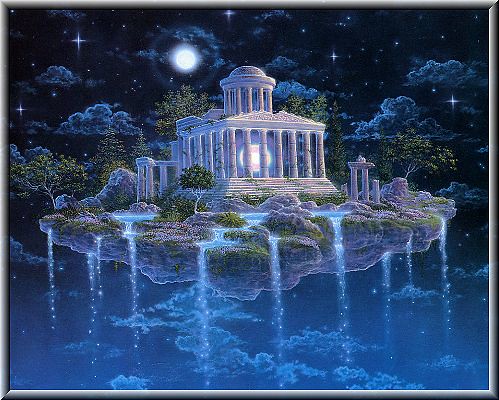|

Lemuria was an ancient civilization which
existed prior to and during the time of Atlantis.
Physically, it is believed that Lemuria existed
largely in the Southern Pacific, between North
America and Asia/Australia. Lemuria is also
sometimes referred to as Mu, or the Motherland (of
Mu). At its peak of civilization, the Lemurian
people were both highly evolved and very spiritual.
While concrete physical evidence of this ancient
continent may be difficult to find, many people
"know" that they have a strong connection to
Lemuria.
Lemuria, the lost continent of the Pacific, has been
discussed in nineteenth-and twentieth-century occult
literature as the Pacific equivalent of Atlantis. It
is distinct, however, in that it is a completely
modern invention, having originated in the middle of
the nineteenth century as a means to solve some
problems of biology. Biologists had noted the
existence of very similar flora and fauna in
southern India and Ceylon (now Sri Lanka) and
southern Africa. The problem was that these species
did not exist on the lands between. Before
scientists had arrived at an understanding of
continental drift, Philip L. Schattler proposed the
idea of a land bridge between southern India and
southern Africa. The lemur was a prominent animal
whose habitat was being researched, and Schattler
gave the name Lemuria to his hypothesized land
bridge. The idea was quickly adopted by a number of
biologists, including Ernst Haekel (1834-1891), who
further hypothesized that Lemuria was the home of
the missing original hominoids. (Many yet-tobe-discovered
skeletons would point in different directions.) By
the 1880s, the lost continent of Lemuria would be an
honest (if soon-to-be-discarded) scientific theory.
The idea of Lemuria as something more than a
physical place, or at least somewhere which had been
inhabited by non-human entities before the
appearance of man, derives from the writings of
colourful Russian occultist Helena Petrovna
Blavatsky (1831-1891). |








